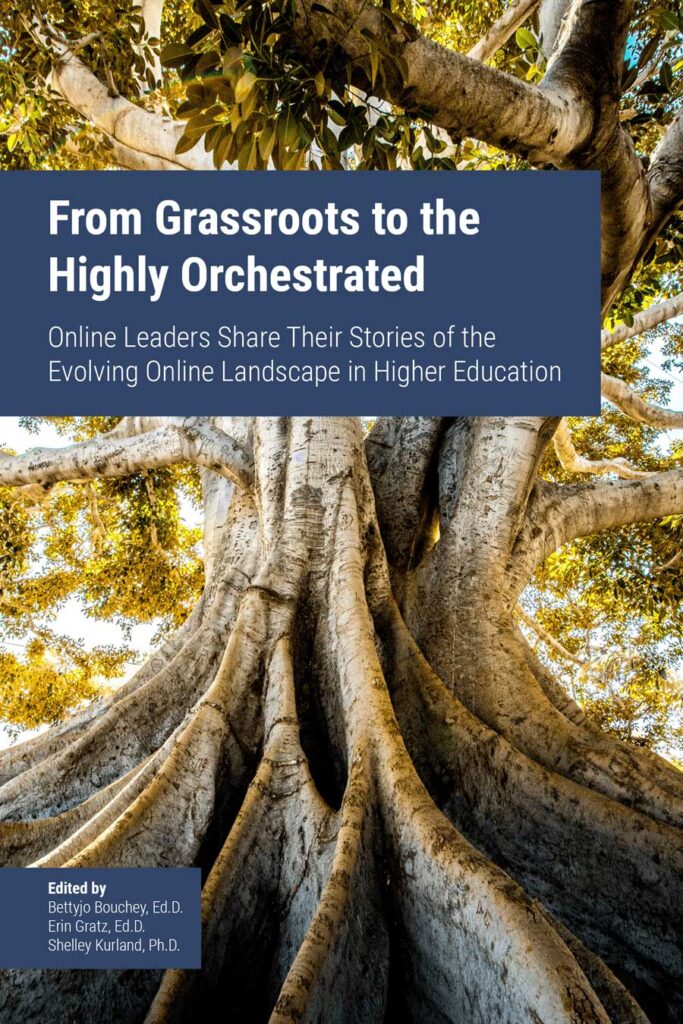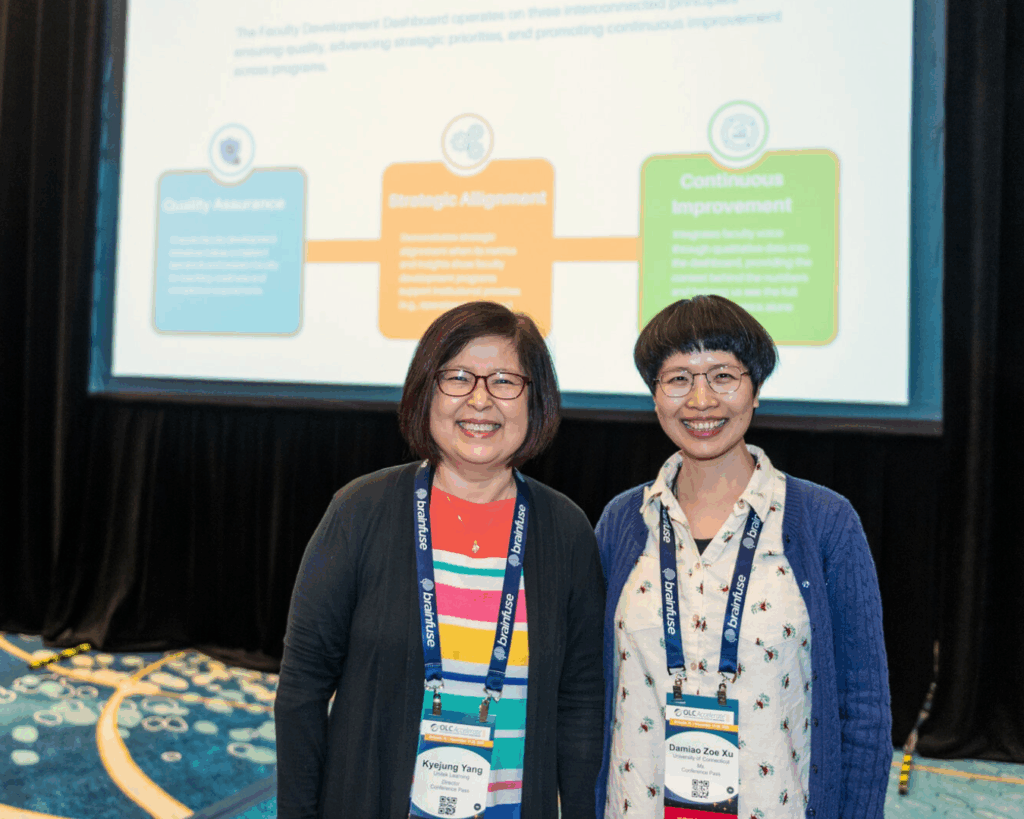New Book from the OLC Press Highlights Voices, Stories, and Experiences of Online Academic Leaders Navigating Higher Education’s Evolving Landscape.
The only constant in higher education is change, especially recently. Since the onset of the pandemic, online academic leaders have been positioned at the center of this most recent transformation. A new book, From Grassroots to the Highly-Orchestrated: Online Leaders Share Their Stories About the Evolving Landscape of Higher Ed, aims to highlight these leaders’ stories and experiences, and through reflection, promote wayfinding for academic leaders.
The book is edited by Dr. Bettyjo Bouchey, Associate Professor and Dean of Online Education at National Louis University; Dr. Erin Gratz, Instruction and Outreach Librarian at Orange Coast College; and Dr. Shelley Kurland, Dean of Virtual Campus at the County College of Morris. This volume features a spectrum of nearly 50 voices from higher education leaders from the field.
“They are brave, authentic, and relatable stories that highlight the ingenuity of their leaders and how online leaders harness the coalition of the willing to benefit their students, faculty, and staff in an otherwise messy organizational structure. These stories are those of the authors, but they are also all of our stories–we lead together into the future of online education,” Dr. Bouchey said.
A July 2022 release from the OLC Press, the book is the inaugural title of the Online Learning Consortium’s new publishing imprint, and is written for and by online academic leaders. From Grassroots aims to illuminate the organizational structures and leadership strategies of online education units at higher education institutions through Chief Online Officer’s first-person stories, practices, lessons, and innovations.
Dr. Bouchey, Dr. Gratz, and Dr. Kurland answered questions about the book by email. Their responses are featured below.
Q: Why is this book essential reading for online academic leaders, particularly at this critical point in time for online education?
A: While the original ideation for this book took place back in 2018 and 2019, the post-pandemic dialog around online education and its future feels like a serendipitous alignment with the release of this book. Even though the conversation around higher ed is changing for several years now, the COVID-19 pandemic really forced all higher ed institutions to do business differently, by expanding into the virtual space. As we adjust to the next normal, most institutions are intentionally thinking about how to move forward, and inevitably online education is part of the conversation – all the more important to have a set of stories to learn from and leverage.
Q: What is the story of this book’s beginning? How did you conceptualize it?
A: We were fortunate to meet as part of the 2018 IELOL cohort. During that time we all had opportunities to talk about what we were working on and what the future of our work looked like. As we listened and shared, a smaller group of us noticed that there were a lot of similarities in these stories, but there were also salient differences that were compelling enough to really want to understand more. As a result, we launched our research study into the evolving nature of online education with help from OLC, UPCEA, and the CHLOE researchers and during that proceeding year we found that the texture and richness of the findings called for more than just merely presenting findings. In fact, our chief finding was that online units just did not follow a straight line and they resisted conventional organizational design principles, so much that we wanted to find a way to tell not just the story of those 31 institutions, but of many more–in the hopes that online leaders across the globe could find themselves in a story or two, or strive to emulate a story. And that was the beginning of this book.
Q: Since this book is based on research you began conducting prior to the pandemic, can you describe the original goals of your research and how you adapted your research process as the landscape of higher education changed overnight in March of 2020?
A: Our original intent was to map online units into trusted principles of organizational design through a year-long study into each phase of the online student lifecycle. Ironically, our last interview was scheduled for March of 2020 and so began our tremendously personal and inspiring conversation with those online leaders about how they helped their institutions face COVID-19 shutdowns.
Q: The chapter authors have a high level of expertise as online leaders across the country from a variety of different roles and institutions. What did you personally learn about online leadership through the experience of working with these experts and their chapters?
A: There were so many lessons, it is almost difficult to isolate just a handful. The insights ranged from leadership, to operations, and to future ways of being that optimize online learning and widen access for the contemporary student. The most salient lessons, however, were the reminders that we work with people first, whether it is with students, faculty, peers, or staff, and technology, second. Moreover, too, we were inspired and heartened to read about the risks, rewards, failures, and successes that our chapter authors experienced, and the grace by which they navigated, and continue to navigate, the ambiguity of the future of higher education.
Q: You’ve organized the book into five sections: leadership, administrative functions, academic functions, student onboarding and support, and innovations. What is one compelling insight readers can gain from the stories and insights shared in one of these sections that you would like to share here?
A: It is difficult to choose one section to highlight, as each story is important to the history, growth, and evolution of online learning. Prior to the pandemic, online learning may have been viewed as simply a modality by some institutions, and perhaps one of less value to traditional, residential offerings. However, we would now argue that online education can be recognized as the true disruptive innovation it always was–the type of innovation that cross-cuts our institutions, elevates service-levels, challenges conventional norms, and opens the door to ultimate access for our students. When we say that you might think we would choose the Innovation section as the one that all readers should bookmark and read, and then read again, but the true answer is that the journey of online education at each institution is highly contextualized to the history, mission, and context of that institution and its evolution is unique so that we think each reader will find themselves in different chapters, depending on where their unit is and where it is going. All three of us encountered this as we were editing the book, and we can’t wait to hear your favorites.
Yours in online,
Bettyjo, Erin, and Shelley





